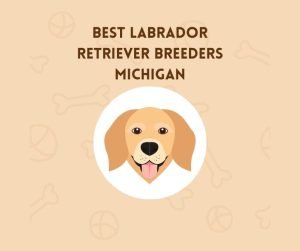Wondering how much time it takes for Goldens to get their full coat? Golden Retriever coat stages include – fluff to fur, coat transition, and final feathering.
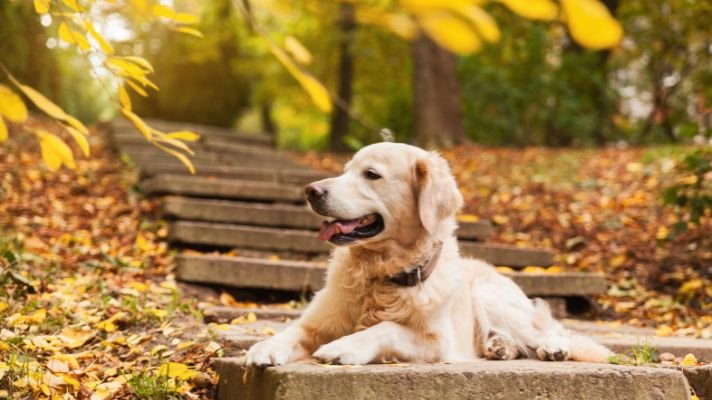
Golden retrievers have beautiful, silky and shiny coats. If you have recently got a Golden Retriever puppy, you must be excited to see your pup’s long, glossy hair. This article includes everything you need to know about Golden Retriever coat stages and coat care.
But before that, let’s know a little about the breed.
Quick links to different sections
ToggleAbout Golden Retrievers
The Golden Retriever is one of the most popular dog breeds in the United States. Goldens’ characteristics like high intelligence level, trainability, friendliness, loyalty, and playfulness make them ideal for families.
Golden Retrievers were primarily bred to retrieve shot birds. Due to its soft mouth, the breed is used to help hunters bring back shot waterfowl undamaged.
Among the different personality traits of the breed, friendliness is my favorite one. I like how easily a Golden retriever dog gets along with anyone, whether it’s families, kids, other dogs, or strangers.
As they are energetic, their exercise needs are quite high. In order to prevent destructive behavior, it’s important to provide daily intense exercise. Besides being destructive, the lack of sufficient exercise can also result in problems like obesity, excess barking, restlessness, and annoying behavior.
Golden Retriever Coat Stages
Apart from amazing personality traits, Golden Retrievers are also known for their beautiful, Golden coats. Achieving a full coat takes time. The exact time duration for the final feathering varies slightly from one dog to another, depending on the heredity.
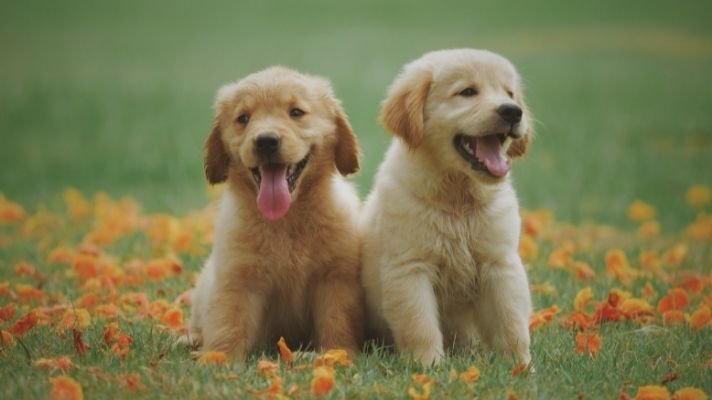
The pup goes through three stages. Here are they:
- Fluff to fur stage (around 3-4 months)
- Coat transition stage (around 4-8 months)
- Final feathering stage (around 8-18 months)
Fluff to fur stage
At around 3 to 4 months of age, your pup’s coat growth will start. At this age, the Golden Retriever puppy’s fluff will transit into the fur. You will start seeing some growth in the pup’s short coat, starting from the tail. If you don’t notice any transition from fluff to fur, there’s nothing to worry about. Sometimes, it’s not noticeable. Keep in mind that the time duration also varies for an individual dog depending on the heredity.
Coat transition stage
At 6 months of age, the dog will shed its coat completely. During 4 to 8 months of age, you will start noticing the beginning of feathering. Your pup will start getting adult coats. Over time, the Golden Retriever starts getting hair on the tail and eventually on the body. In some cases, it takes a bit more time depending on the dog’s heredity. If coat growth took longer for the puppy’s parents, the same time duration you should expect for the puppy as well. The breeder will have all the information about your puppy’s heritage. By contacting the breeder, you can know about the pup’s parents and their coat stages’ time duration.
Final feathering stage
In this coat stage, you will start seeing the growth of the full coat. With time, the growth of your canine’s adult coats will increase. After 8 months, the dog’s tail, stomach, legs, and entire body will start seeing feathers. Once the dog gets 18 months old, the transition from fluffy coat to final feathering will be over. As I have already mentioned, the time duration can differ based on your dog’s heredity. It’s best to get this information from the breeder.
Golden Retriever Shedding
There’s nothing called a non-shedding dog breed. The truth is, all dogs shed to some degree. Some shed more compared to others.
Talking about Golden retrievers, they shed moderately all year round. The shedding level increases in the late spring and late fall.
Golden Retrievers have double coats – undercoat and outer coat. They have a thick undercoat and dense outer coat. Their undercoat provides them protection from cold and hot weather. On the other hand, the water-repellent outercoat ensures protection from dirt.
A Golden Retriever living in a hotter place will shed more. This keeps the dog cool.
During the late spring, Goldens shed to stay cool in the summer. And during the late fall, the lighter undercoat sheds. The thicker undercoat protects them from winter elements.
As an owner, you have to get used to shedding. With high shedding dog breed like a Golden retriever, you will find fur all over your house, bed, carpets, and clothes.
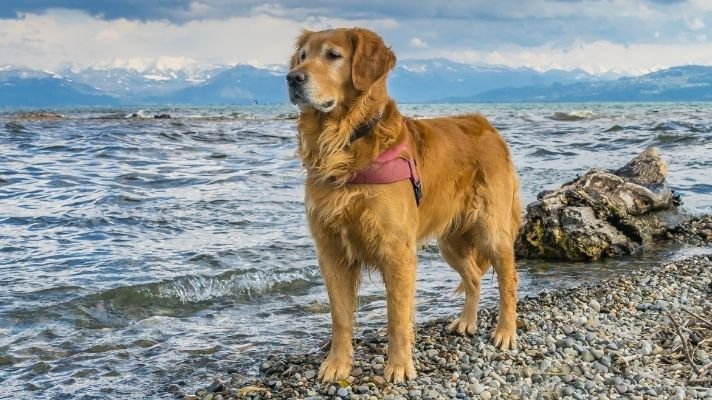
Should I Shave My Golden Retriever?
No, not at all. As Golden Retrievers shed so much, shaving them off might seem a viable option. You might be thinking shaving completely will keep your canine cool in hot temperatures as well as get rid of shedding.
This isn’t true. In reality, this is the worst thing you can do with your canine. Even if you reside in a hotter place, shaving isn’t recommended.
Why?
Shaving will cause damage to your canine’s double coats. Once you completely shave, the coats will be damaged and may never grow back like earlier. Besides this, shaving a Golden Retriever can result in many other issues like skin damage and allergies.
The dog’s undercoat ensures protection from hot and cold temperatures. In the springtime, the undercoat sheds to get protection from hot weather. And in the wintertime, the undercoat grows to get protection from cold weather.
Dog shedding cannot be stopped. However, there are various ways to reduce Golden Retriever shedding. With regular brushing, baths, and the right food, shedding can be controlled.
Golden Retriever Coat Care
Taking care of your canine’s coat doesn’t just help to reduce shedding, but also ensures better coat health. Thus, coat care needs to be an important part of the dog care routine.
As I said, there’s no way to prevent dog shedding completely. However, proper grooming and coat care can minimize shedding to some extent. Here are some ways to minimize shedding and improve the coat health of your GR:
Brushing
When it comes to coat care for Goldens, brushing needs to be a part of the daily routine. For high shedders like Golden Retrievers, regular brushing can help a lot in minimizing the shedding level.
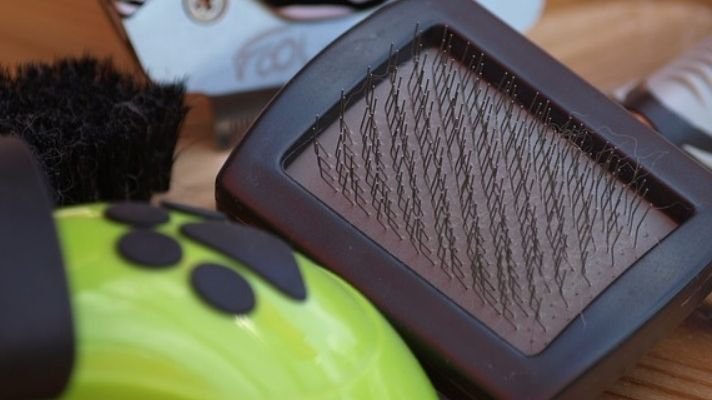
For Golden Retrievers, it’s recommended to brush daily. If you can’t manage to brush daily, do it at least 3 to 5 times every week. A regular brushing schedule will ensure better coat health by preventing fur tangling and matting.
For Golden puppies, using a soft brush is advisable. And for adult Golden Retrievers, a stiff-bristled brush is advisable.
When it comes to following a brushing schedule, it’s better to start early. This way, your pup will get used to it.
Bathing
After brushing, bathing is another important part of the coat care routine. Cleaning the coat properly may not be possible just with brushing. When you take your canine outdoors for playing or exercise, he comes back with some dirt on his coat. This is when the importance of bathing comes in.

Bathe your Golden Retriever once a week or twice a month. To the max, the gap between two baths should not exceed six weeks. In a nutshell, the dog should get a bath at least once in six weeks.
For providing baths, use the right dog shampoo and conditioner. Regular baths won’t just remove all the dirt from your dog’s body, but will also manage excess shedding.
That doesn’t mean you should start providing baths more frequently. There’s a downside as well. With more frequent baths, the dog’s skin will become dry.
Food
What you feed has a great impact on the dog’s coat health. Feeding the wrong food won’t just ruin your canine’s coat health, but it can also lead to other problems like weight gain, dandruff, allergies, and undesired behavior.

When it comes to dog food, the lack of sufficient protein can negatively affect coat health. To achieve a glossy coat, feeding food with the right amount of protein is so important.
Apart from protein, your canine also requires healthy fats. With healthy fats like omega-6 fatty acids and omega-3 fatty acids, it is possible to achieve a shiny and glossy coat.
Related Questions
At what age do Golden Retrievers get their full coat?
It takes around 18 months for Golden Retrievers to get their full coat. The time duration will not be the same for all dogs. It can be more or less depending on the heredity. If your Golden retriever’s parents got their full coat late, the same thing can happen with your pup as well.
Do Golden Retrievers’ coats get darker?
Yes, Golden Retrievers’ coat color does get a bit darker as they grow old. Normally, Golden Retriever puppies are born with lighter coat colors than their parents. At around 2 months of age, their coat color starts changing. Checking your pup’s ear tips color can give you an idea about how darker the coat will get.
How do I stop my Golden Retriever from shedding?
Golden Retrievers shed throughout the year. There’s no way to stop dog from shedding completely. However, proper coat care and grooming can reduce the shedding level. Some of the best ways to minimize Golden Retriever shedding are brushing, bathing, and feeding the right food. This won’t just help you reduce shedding, but also keep your canine’s coat healthy and beautiful.
Final Thoughts
The transition from fluffy coat to final feathering takes around 18 months of time. There are three Golden Retriever coat stages – fluff to fur stage, coat transition stage, and final feathering stage.
Here, I have talked about each of these coat stages to provide you with an idea of how much time it will take for the full coat. Besides this, I have also shared some tips for coat care and answered some FAQs.
TRAIN YOUR CANINE! ⬇️
[adinserter block="1"]

